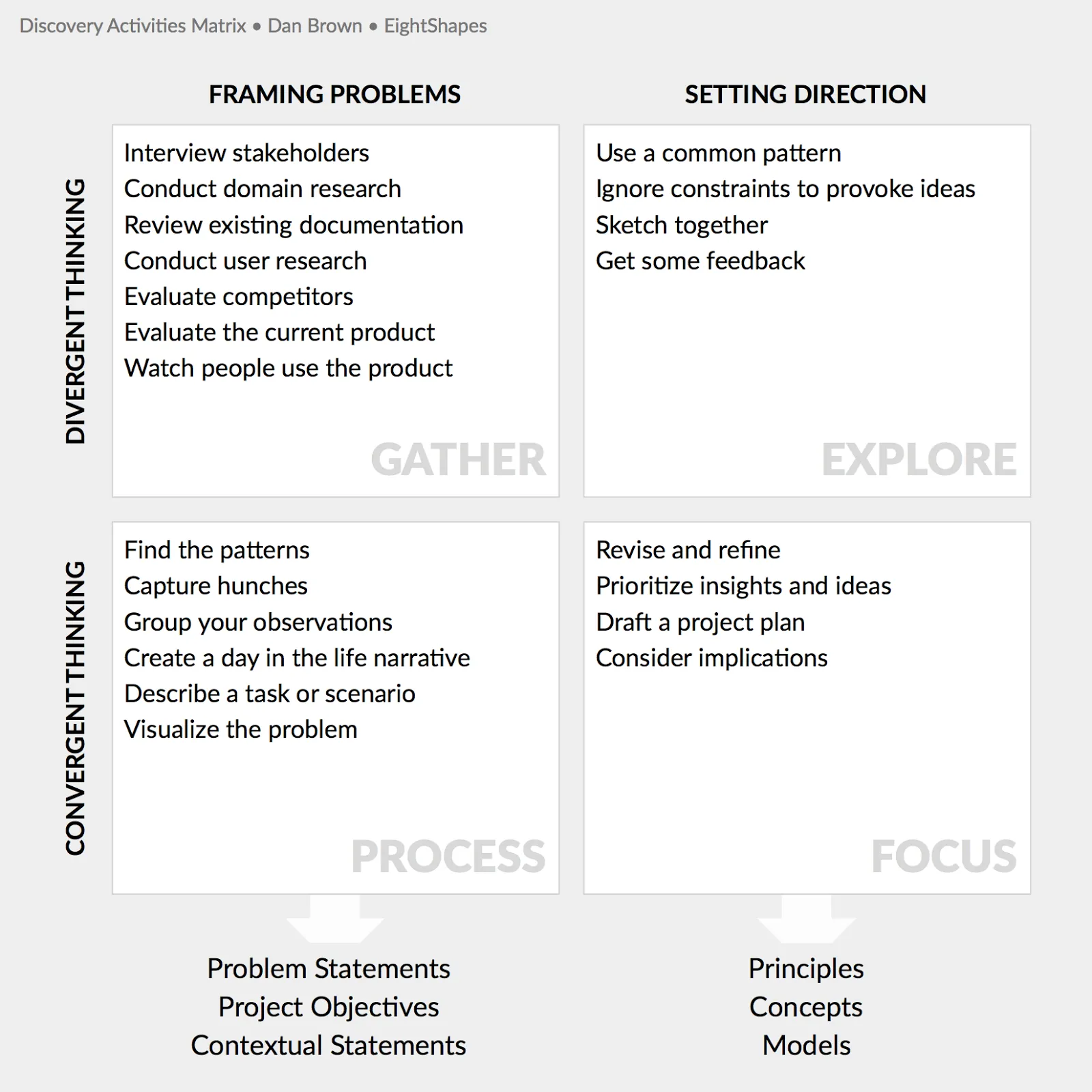WRITINGS
Practical Design Discovery
May 18, 2018
Dan Brown wrote a magnificent little book about discovery. With a consultant’s savoir-faire, he engages his subject with practicality and professionalism.
Reading the book helped not only provide a better understanding of design discovery, but insight into how Mr. Brown practices consulting.
Discovery, Mr. Brown explains, is not just a phase or process, but a mindset. It’s not about following steps, but the right attitude.
The enormous value of this book is in lending language and structure to a rather abstract concept. Every design project includes discovery work. Having a clear framework and understanding the approach for discovery only improves that part of the work.
In the book, Mr. Brown laid out his Design Discovery Framework, reproduced with permission below.

As he went through the four quadrants (what he thought of as chambers in a heart) these five takeaways emerged.
Every design project includes discovery. Whether six months or six minutes, exploration will occur before a design is executed.
Assertions from design discovery are subject to change. Adapting and updating after execution is normal.
Design discovery is more group facilitation than solo exploration. Design discovery provides many advantages, especially shared language, understanding, and direction.
Design discovery is a set of activities. It’s not passive. Doing the activities will produce results. Skipping the activities will not. Trust the process.
Design discovery is incredibly practical and actually speeds teams up. It’s common sense meets professional duty; asking why before jumping into what means not getting hung up on minutia during design execution.
Design discovery is squishy, but it can still be structured for success. Dan Brown’s Practical Design Discovery sets out a straightforward way for designers to incorporate this underrated aspect of design into their practice.